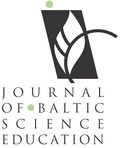A READING CURRICULUM FOR THE HOMO ZAPPIENS GENERATION: NEW CHALLENGES, NEW GOALS
| Title | A READING CURRICULUM FOR THE HOMO ZAPPIENS GENERATION: NEW CHALLENGES, NEW GOALS |
| Publication Type | Journal Article |
| Year of Publication | 2013 |
| Authors | Kordigel Aberšek, M., Aberšek, B |
| Journal | Journal of Baltic Science Education |
| Volume | 12 |
| Issue | 1 |
| Start Page | 92-106 |
| Date Published | March/2013 |
| Type of Article | Original article |
| ISSN | 1648-3898 |
| Other Numbers | ICID: 1037494 |
| Keywords | comprehension strategies, natural science, reading strategies, science education |
| Abstract | A new model for a 21st century reading curriculum (RC), needed as a consequence of the changes made by new technologies on human brains in the last two decades, will be presented. Cognitive science warns that some of these changes can seriously threaten the science learning process in school. This of course has implications for the educational system – including, perhaps primarily, the RC. A RC for the “Homo zappiens” (HZ) generation should comprise of two kinds of reading competences: informative and explicatory reading/learning texts strategies (=off-line reading competence); ICT reading/learning strategies (= on-line reading competence). Both of these are essential for reading, especially for reading both types of natural science texts: those on the screen and those on the paper -in the natural science textbook and in the secondary science literature. The results of the meta-analysis, which was used to examine the basis for implementing a reading curriculum for Homo zappiens by natural science teachers in the near future, are an important part of our research. The question is crucial and relevant because research has proven a strong connection between reading competence, reading comprehension and learning success generally, particularly in a science field. The results have shown a strong absence of interest among natural science teachers regarding reading competence for comprehension of science texts. |
| URL | http://oaji.net/articles/2015/987-1425757826.pdf |
| DOI | 10.33225/jbse/13.12.92 |
| Refereed Designation | Refereed |
| Full Text |
